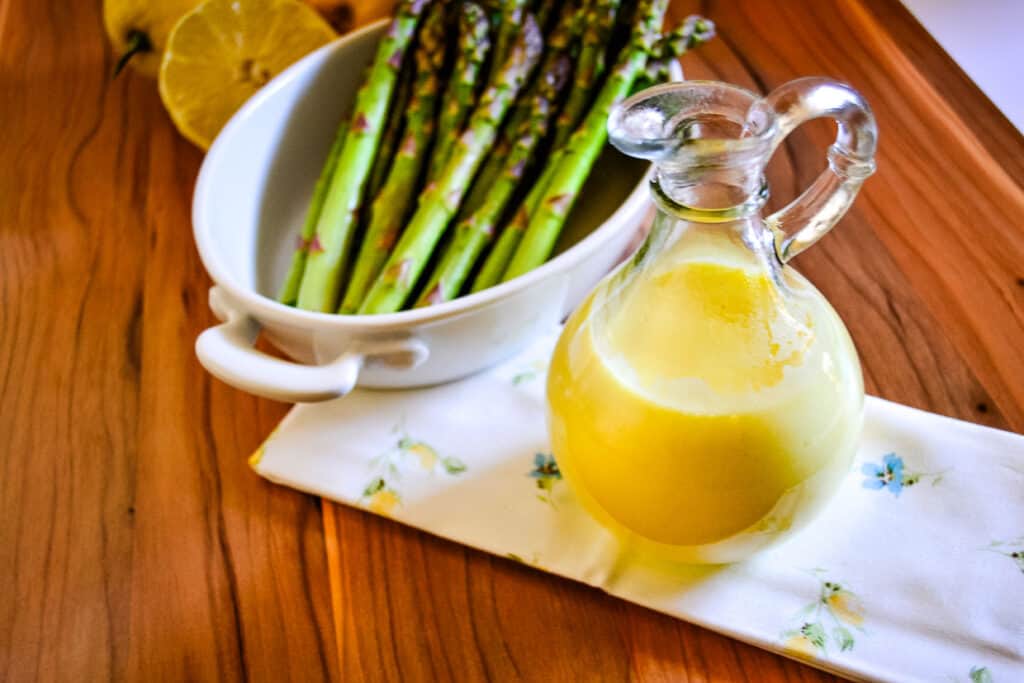The foundation of French cooking all starts with five basic sauces: the French mother sauces. With a legendary history dating back to the mid-1800s, these basic sauces help form the basis for the sophistication of French cuisine. Understanding what they are and what you can do with them can transform your culinary skills.

The five French mother sauces
The five French mother sauces date back to the mid-1800s, with different chefs proposing different combinations of mother and daughter sauces that have evolved throughout the years. The most common list of five sauces — béchamel, velouté, espagnole, tomato and hollandaise — are attributed to Auguste Escoffier and his 1903 cookery book “Le Guide Culinarie,” which is still in print today.
Each of these mother sauces forms the basis for multiple daughter sauces, which are created by adding a variety of herbs, spices, cheeses and other seasonings. These daughter sauces, both the classic versions and their more modern counterparts, are found in many of the delicious foods we know and love today. Whether you follow the classic French rules or get creative in the kitchen and make your own, learning to make these basic sauces can amplify your cooking skills.
Béchamel
One of the three sauces that rely on a butter and flour roux, béchamel is a milk-based white sauce thickened with a white or blonde roux and seasoned with minced onion, white pepper and occasionally nutmeg. From a béchamel, you can add tarragon to make bohémienne sauce or truffles and lobster to make a cardinal sauce.
The most common daughter sauce that you can make from béchamel is mornay. Traditionally, mornay is made with gruyere, parmesan and sometimes cheddar. Through the creation of mornay, béchamel is the basis for cheese-based dips like beer cheese and cheesy pasta sauces.
“The five mother sauces really open up a world of cooking. Once you master béchamel, for example, you can use it in many recipes. My favorite is to use it to make a grown-up version of mac and cheese with bacon and tomatoes, but it’s also delicious for homemade nacho cheese sauce, pot pies and so much more. This is the mother sauce I make most often.”
— Michelle Price, Honest and Truly

Velouté
The second white sauce, also created with a white roux, velouté, is made with light-colored lamb, fish, vegetable or chicken stock. To maintain the white color, the stock for velouté is usually made with unroasted bones.
Velouté means velvety in French and is exactly the texture the sauce will have if made correctly. You can add tomato puree to velouté to make aurore; shallots, white wine, fish, butter and parsley to make bercy; or mushrooms, cream and butter to make supreme.
Espagnole
Espagnole is a rich brown sauce made from brown stock, tomatoes and a dark roux. It is designed to be flavorful enough to stand on its own or be developed into additional daughter sauces. You can make a bordelaise by adding red wine, shallots, pepper and thyme or a financiere by adding Madeira and truffles.
It’s often served with meats such as beef, lamb and game but can also be added to stews, casseroles and vegetable dishes to enhance flavors and increase the complexity of a dish. While the name might be Spanish, it is a versatile French sauce.
Tomato sauce
Probably the most widely used French mother sauce is “sauce tomate,” or tomato sauce, which encompasses all tomato-based sauces. You can prepare these sauces in a variety of ways. They can be raw or may require hours of simmering on a stovetop. Depending on the season, they can be made from fresh, canned or frozen tomatoes.
Some tomato sauces, like this spaghetti sauce, call for adding carrots, onions, garlic and pork sausage, while others call for nothing more than just tomatoes. Tomato sauces can be chunky or pureed and thickened by cooking down or adding a roux or other thickening agent.

Hollandaise
The last of the five French mother sauces is hollandaise, an emulsion of egg yolks, butter, lemon juice and often white wine. Traditional hollandaise is made on the stovetop with a whisk, and it requires your full attention while whisking it.
As it is, hollandaise transforms poached eggs, ham and English muffins into a delicious eggs benedict. You can also serve it over steamed asparagus and salmon. Add hollandaise to whipped heavy cream to make a mousseline for fish, or season it with tarragon to create a béarnaise sauce perfect for grilled meats.
Modern twists on classic sauces
Learning how to create these classic sauces at home will help you hone your culinary skills and unlock a world of possibilities. Understanding how béchamel, velouté, Espagnole, tomato sauce and hollandaise function in their classic forms allows you to unleash your creativity in the kitchen and transform them into something new. Before you know it, you’ll step beyond the age-old daughter recipes and begin crafting new sauces that are uniquely your own.
Renee N Gardner is the creative mastermind behind Renee Nicole’s Kitchen, a recipe blog based on seasonal ingredients, dedicated to helping home cooks build their kitchen confidence to become home chefs. When Renee isn’t writing, developing recipes or photographing food, you’ll find her in the garden, traveling or enjoying the outdoors with her husband, son and two dogs.